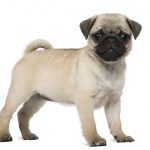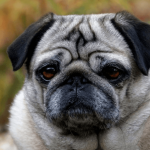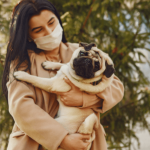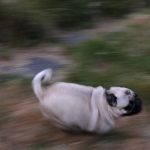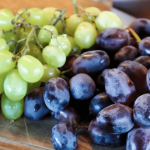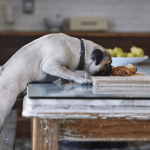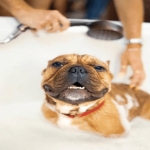Dogs
When Do Pug Puppies Stop Growing? {Age and Weight Table Included}
Pugs are amazing dogs to have. They can be mischievous and clownish. They grow in front of your eyes pretty fast. Sometimes you can’t believe How far they have come in life. Pugs are a smaller breed of dogs. Pug’s growth in terms of their physicality and maturity is not visible. But pugs grow at their own pace. Pugs become full-grown adult dogs after 9 months. It is said that they are adults after 1 year of age. Let’s know about the various stages of a pug’s growth in more detail, and also know When do pug puppies stop growing.
Contents
- 1 What are the Various Stages of Growth for Pugs?
- 2 Pug Growth and Weight Chart
- 3 When Do Pugs Stop Their Growth?
- 4 How Big Should a Pug be at 6 Months?
- 5 How Much Bigger Would a Pug Get?
- 6 What is the Size of Fully Grown Pug?
- 7 How Do You Properly Weigh and Measure a Pug?
- 8 Factors that Influence Pug Puppy Growth
- 9 How Do I Make Sure My Pug is Healthy?
- 10 FAQ on Pug’s Growth
- 11 Final Words!
What are the Various Stages of Growth for Pugs?
Pugs belong to the toy group of dogs. Pugs are often given birth by their mothers through a cesarean (C- sections) process. Pugs belong to a dog breed which is known as byracheaphelaic. Females belonging to the breed have narrow pelvis and puppies have wider heads. So, it is quite risky health wise for a pug mother to birth a child
Pug puppies generally have 5 distinct growth stages:
- Neonatal birthing stage
- Transitional stage
- Elements of socialization stage
- Ranking stage
- Adolescent stage
You can see the following traits developing on your pug in each stage-
Neonatal birthing stage (birth period-2 weeks)
The neonatal birthing stage is the earliest period of a pug’s life. In this stage, pugs haven’t developed enhanced senses. Pugs are blind, deaf, and toothless. The abilities to touch and taste are present. In this stage, the mother has more control over her puppy. She feeds him and keeps him safe. Pug mothers will mostly nurse their newborns at this age. Most puppies would love to sleep without having to do anything.
There can be other changes you can see as well regarding weight. You can see your pug double its weight in a week. The daily increase of a pug weight shall be an increase of 5% of their body weight. A pug’s mother will take care of the hygiene of baby pugs. Pug babies can urinate and defecate accidentally. The mother pug will lick the anal region to keep the pug clean.
Transitional stage (2-4 weeks)
There are other developments as well that a pug goes through after the neonatal stage. Pugs’ hearing and sense of smell develop in the transitionary period. Pugs’ eyes will start to open during this time. You would also be able to see small teeth appear on a baby pug. Puppies will also start to move, wag their tails. Pugs will also try to stand during this period. As far as the pug’s behaviour is concerned, they will copy their mothers. Pug puppies will also try to form bonds and imitate their brothers belonging to the same litter.
During this stage, a lot of biological changes may crop up. You as an owner might be surprised to see the changes. Your pug will have blue eyes in the beginning. Do not worry, it will change to brown colour later. Your pug might have an issue with ocular problems. In case any such bad incident happens, take your pooch to a recognised vet.
The stage of socialization is very important. This is the stage where we see a lot of development in your pugs. The stages of socialization are given in detail here:
- 3-5 weeks: During this period play becomes important for your pooch. During this stage, the pug is also aware of the surroundings.
- 3-4weeks: Pugs also start to have some control over relieving themselves. You can see your pooch going out for a pee. They will move out for a poop.
- 4-6weeks: These weeks are very crucial for any growing pug. A pug during this time frame learns to play with his other littermates. He forms connections and bonds with other dogs. He starts interacting with other dogs during this period.
- 4th week: 4th week is the exact period for people interaction. By this time your puppy will try to interact with you.
- 5-7 weeks: These weeks are very important for a pug puppy. Your pug puppy’s human interactions further lead to their development. This is the time to play with them and shower them with love.
- 6-8 weeks: Pug puppies should start getting vaccines around this time.
- 8th week: This is almost a bit of a crucial week for your pug. It is the time when pug puppies leave drinking mother’s milk. From the 8th week, pug puppies can eat solid foods. And, hence they can be taken to the owner’s homes.
- 7-9 weeks: This is the right time to potty train your pooch. You can try house training and potty training for your pug.
- 9-12 weeks: Pug puppies are a lot more impressionable during this period. You can start making them learn commands by now.
- 14-16 weeks: Pugs during this time should be socialized with humans. During the 4th week, pugs develop a strong bond with littermates. But in the 14th-16th week timeframe, it is the time to socialize with humans. Make sure your pooch is exposed to a lot of experiences. Help your pug to be better dogs in their lives.
Ranking Stage (3-6 months)
The 3-6 month period is often referred to as a ranking stage period. This period is primarily focused on how you develop relationships with your pug. The second aspect of this stage is the development of teeth in a pug. The stage is known as teeth. Your pug can have agitation because of teething. Keep ready with toy chews and other chewing items. Your pugs might need them in case of requirement.
Adolescent stage (6-18 months)
The adolescent stage can be classified as the last development stage for a pug. Pugs develop sexual maturity around this age. During the 9th month, the pug’s growth gets hampered and it slows down. At the age of 1, pugs reach their real weight.
This is also the stage when your pug finds its character. During this stage of growth, a young pug demands a bit of independence. You can try to train your pug during this time. Make sure he’s naturalised to meeting other dogs and breeds. That way your pug can form bonds and characters with other dogs. It is also good because naturalisation helps a pug to not attack humans and other breeds then.
Pug Growth and Weight Chart
A pug growth chart helps a person to know if their pooch has the right weight. AKC breed standard has an ideal weight categorisation for both male and female pugs. According to them, both male and female pugs should ideally weigh between 6.5 kg (14.3lb) and 8.5kg (17.6lb). Pugs that do not fall under these categories should be classified as either underweight or overweight.
One more interesting thing is, in pugs, both males and females ideally have the same weight. There does not exist much difference between the weight of both males and females. Your pug should not look like a barrel either. If your pug looks fatter that can also mean that your pooch suffers from obesity.
The weight given below is also based on averages. Your pug can weigh more or less than the data provided in the chart.
| Age | Average weight in pounds | Average weight in kilograms |
| 8 weeks | 4 lbs | 1.8 kg |
| 10 weeks | 5 lbs | 2.3 kg |
| 12 weeks | 6 lbs | 2.7 kg |
| 15 weeks | 7.5 lbs | 3.4 kg |
| 6 months | 12 lbs | 5.5 kg |
| 7 months | 15 lbs | 6.8 kg |
| 8 months | 17.5 lbs | 8 kg |
| Adult | 18-20 lbs | 8-9 kg |
When Do Pugs Stop Their Growth?
Every pug reaches their desired growth of height and weight during 9 months. Pugs have their fixed weight and height in the 1st year of their age. Pugs also reach adulthood after 1 year of their age. As far as the sexual maturity in pugs is concerned, female pugs have heat cycles. Females enter their first heat cycle during 6-9 months. This cycle is also known as oestrous.
Male pugs also activate their reproductive characteristics around the same age. They activate their sexual maturity during 6 month-1 years of age. The prime age of any pug breed is usually 1, 5-7 years. After that pugs will grow old. Pugs will be considered as senior dogs then.
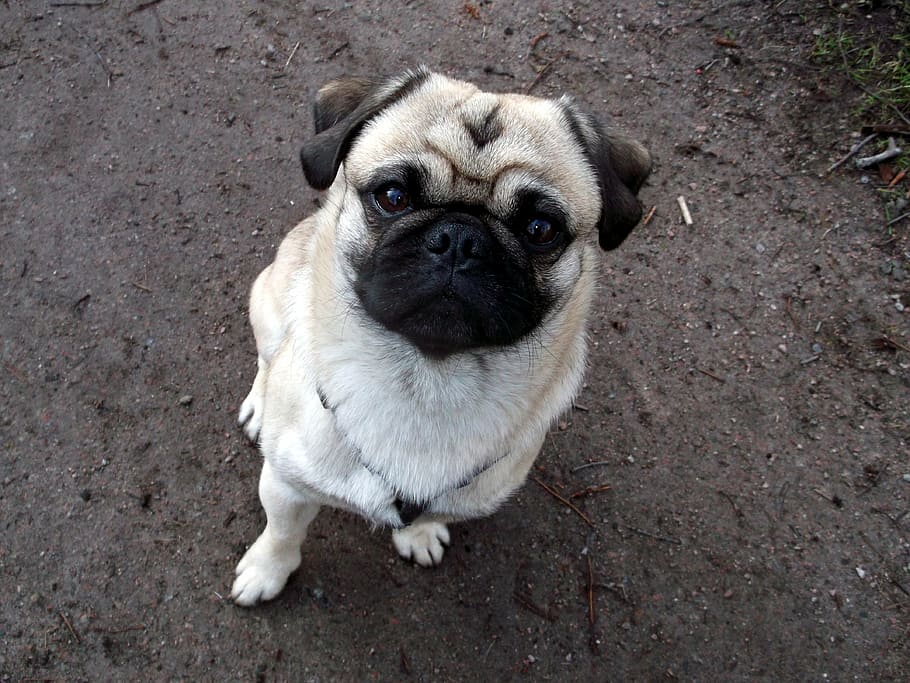
Even after reaching adequate height and weight at 1 year of age, pugs can put on muscle mass fairly easily.
How Big Should a Pug be at 6 Months?
A six-month-old pug weighs between 7 and 12 pounds. The optimum height of the pugs should be 12-13 inches. You should also try to get adequate measurements. Make sure you are measuring from the footpad to the shoulders. As long as you know how much is the adequate weight there is nothing to worry about. As far as the American Kennel Organisation is concerned, pugs are ‘chowhound’ dog breeds. This term reflects on how the human parents of a pug have to look after their pooch.
Pugs can get overweight very easily. They sniff food. They eat food very fast. They do not understand how much food they should eat? It’s better to give your pug small portions of food in multiple batches. Food should be less but should have a good amount of nutrients.
If by chance your pug is overweight due to some reason, take them to a vet. From there on a veterinarian can give you advice on the food plans of your pug.
How Much Bigger Would a Pug Get?
Generally, the question At what age do pugs stop growing is always there in the mind when you are having a pug at your home so that you know how things are going on with your pug.
Pugs usually get their desired size when they are 9 months old. Some pugs can grow up to 1 year of age. If a pug is under 9 years, it will still grow. There are certain characteristics that you can watch out for. You can lookout for a pug’s paw. If you find the paw oversized when compared to the leg, the pug will grow.
For first-hand info, you can just contact the pug’s breeder. You can ask the breeder about the pug’s parents. The size of your pug’s parents can determine how big your pug will be.
What is the Size of Fully Grown Pug?
The American Kennel Club Official Pug Standards states a full-grown pug shall be 14 to 18 pounds and stand 10 to 13 inches tall. A full-grown pug will look like a compact sturdy dog breed rather than looking a bit leaner and leggy.
A pug can be in danger if they are putting on excess weight. A pug should not weigh more than 18 pounds. Make sure to reach out to your veterinarian if your pug remains overweight. As far as the Veterinary Centers of America is concerned, canine obesity affects 25-30% of the dog population.
How Do You Properly Weigh and Measure a Pug?
The general rule of thumb to monitor your pug’s weight is to weigh them every 6 months. Make sure after 6 months you weigh your pug every other month. You have to know if your pug is maintaining a healthy weight or not. Your pug can also have a medical condition that can hamper its growth. In such cases, you have to weigh your pug frequently. You can use a weighing machine at home to measure the weight of your pug.
Factors that Influence Pug Puppy Growth
Genetics: Genetics play a very major role in determining whether your pug is overweight or not. Just as humans, pugs can do a lot of exercises but are overweight for some reason. By chance, if a pug’s parents are overweight there’s a chance that a pug will be overweight as well. Genetics influence a lot of the characteristics.
Nutrition: Nutrition plays a vital role in the weight of a pug. Pug foods belong to all types of categories. Some Pug foods are simply not healthy. They have a lot of additives in them. They have fillers that can destroy the quality of the food. Make sure you’re feeding high-quality dog food to your pugs. You have to feed your pug two times a day. And make sure you are feeding meat. Meat is nutrient-dense and is very healthy.
Health & Physical Activity: The final straw that determines the good and bad of a pug’s health is the amount of physical activity. A pug should be physically active. Pugs require some amount of exercise to be healthy. It is recommended that pugs should have minimal exercise. Exercise, in general, will keep their weight minimal. Your puppy should also be properly vaccinated. When receiving proper vaccines they won’t have any major health problems.
How Do I Make Sure My Pug is Healthy?
To take care of your pug’s health you need to know three major things. Firstly you need to know about the health issues your pug’s face. Then you need to know about the costs that are incurred on treating health problems of your pug. Thirdly, how to keep in contact with the vet regarding your pug’s health.
Health issues of your pug
Pugs suffer from a lot of health problems. Some health problems that your pooch can face are cancer, kneecap dislocation, and skin irritation due to their skin’s folds.
As you know your pooch is also a brachycephalic breed. Being from this breed your pooch has some hard time being able to breathe without obstruction. They have a lot of distress in their respiratory system.
The combination of having both a flat face and being brachycephalic can be an issue . A pug can also suffer from a heat stroke due to difficulty breathing. Maintaining a healthy weight is very important for pugs. If the pugs fail to maintain a healthy weight their life might be in danger.
Some health issues in pugs can be so extreme that it requires surgery to treat them. Human parents of pugs treat the elongated nostrils of a dog and even elongated soft palettes present in the nose surgically.
Pet insurance in case of health emergency
The rising cost of vet care can strain your finances. It’s important to have some backup plans. Veterinary treatments and procedures are so costly that they can cost thousands of dollars.
When researched regarding this topic some interesting findings came out. Only a 19% population could be able to afford to pay 5000$ for treating their pugs. Rest had to take up a loan, debt, or engage in some kind of payment plan with clinics.
That’s why it is very important to know how pet insurance plans save you in the future. Pet insurance plans give you a lot of space to be monetarily safe in case of any pug-related emergency. It is not only about extreme problems like health issues. Even an x-ray check-up and a teeth checkup cost so much. It’s important and safe to get insurance for your pet.
Maintain contacts with a good vet
Being with a nice and reputable vet is always a bonus. A lot of your pug problems and issues can be treated before in the vet’s clinic. Make sure your vet can professionally carry out many tests and examinations on your pooch. Your pug won’t have to suffer from any problem or disease later.
Along with that you also have the choice to feed nutritious food to your pooch. Make sure your pug is eating very good food. They also have to exercise to remain healthy.
Teacup pug size and weight
Teacup pugs are crossbred dogs. They are super cute and small. They are crossbred with Teacup Chihuahuas. They are also known as Chug or Pughuahua. Dwarfism is more of a genetic defect than a normal phenomenon. It should not be encouraged since it takes a lot of toll on a dog’s body. It can look good but it can cause health issues in a dog.
A teacup pug has a life expectancy of just 6-10 years. Breeding teacup pugs are highly unethical. It takes a lot of toll on the crossbred animal’s body.
Due to the practice of this kind of breeding, Teacup Pugs can be as small as 1.5kg (3.3lb). A full-grown adult teacup will weigh between 1.36- 4.50 kg (3-10lb).
FAQ on Pug’s Growth
Why is my pug small?
Miniature pugs happen when two small runts of a litter that is small in height mate. It can also happen when a specific type of gene-like achondroplasia is introduced in a pug. Some types of mini pugs that we might not know about include Chugs, and Pughuahuas. These dog breeds can also be classified as designer dogs.
How much does taking care of a pug cost?
A pug generally does not cost that much in the food department. Pugs are smaller dogs. The maintenance of pugs costs you more on frequent vet visits, neutering costs etc. You might also have to pay for the extra problems pugs have due to their genetics. A single session of a vet costs you 50$
How many puppies does a pug have?
Frankly speaking, it’s very different for all the pugs. Sometimes a pug can have only 1 puppy. In the next pregnancy, a pug can have as high as 6-7 puppies. Some healthy pugs have also given birth to 9 puppies. It all comes down to the health of the mother. Good and healthy pugs will reproduce very healthy litter.
How long do pugs remain pregnant?
Pugs can remain pregnant for as long as 60-65 days. If a pug mother is pregnant beyond that, she should be taken to the hospital. Her appetite will not be the same. She might like to eat someday or might refuse the other day. Be patient with her mood swings. The 9th week is crucial, stay with her.
Final Words!
Pug puppies might look like they grow faster than other dogs because they are so small. Your pug will have many stages of growth from the birth period to being an adult. Make sure you stick by them and support them. For the 1st year of your pug, you will have to take good care of your pooch. After that, your pug has an independent phase of its own and tries acting independent.

-
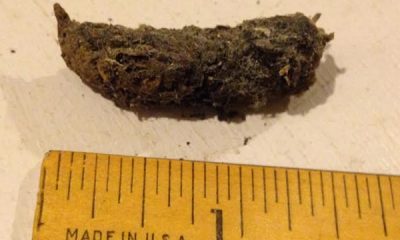
 Skunk4 years ago
Skunk4 years agoWhat Does Skunk Poop Look Like? Images & Identifications
-
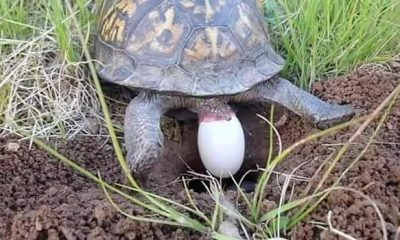
 Turtles4 years ago
Turtles4 years agoHow To Take Care of Turtle Egg At Home?
-
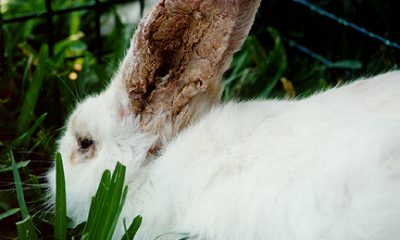
 Bunny4 years ago
Bunny4 years agoHow to Get Rid of Mites on Rabbits? #NaturalRemedies #Video
-

 Horse4 years ago
Horse4 years agoHow Much Weight Can a Horse Carry? #Clydesdale #Friesian #Mustang #Draft
-

 Turtles4 years ago
Turtles4 years agoHow to Take Care of Snapping Turtle Eggs? #Incubating #Hatching
-
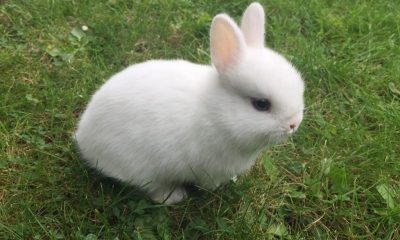
 Bunny4 years ago
Bunny4 years agoHow Big Do Dwarf Bunnies Get? – Amazing Facts #Images
-
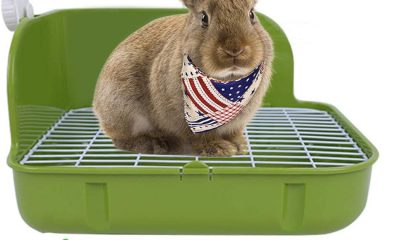
 Bunny4 years ago
Bunny4 years agoHow to Potty Train a Rabbit in House? Tips on Litter Training
-

 Turtles4 years ago
Turtles4 years ago8 Basking Rocks/ Platforms for Turtles – A Perfect Guide




